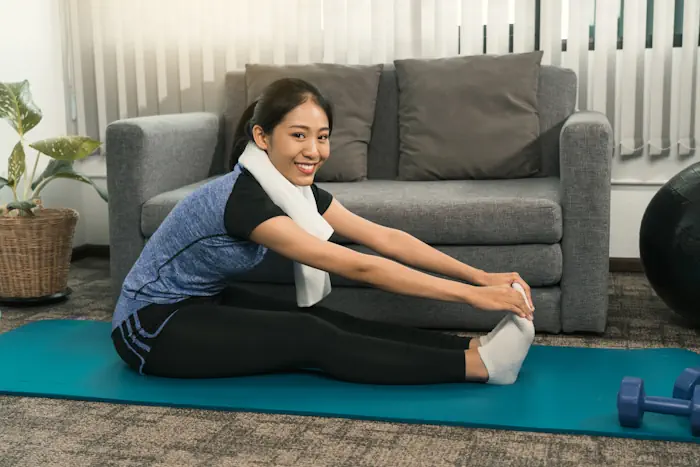Topics
What are the symptoms of tennis elbow?
The symptoms of tennis elbow can vary from mild to severe. The pain usually worsens when you use your arm, especially twisting movements.
Symptoms include:
- Pain in the elbow that radiates to the upper arm or the forearm.
- Weakness in the forearm.
- Pain can begin abruptly or gradually over time.
- You may have difficulty with arm-strength-required activities, such as sports that demand you to hit a backhand or throw a ball.
The average duration of tennis elbow is between 6 months and 2 years, with 90% of patients recovering completely within one year.
What are the causes of tennis elbow?
The most common cause of tennis elbow is overuse of the forearm due to repetitive or intense activities. Occasionally, elbow pain might be caused by a bang or knock to the elbow. If the muscles in your forearm are overworked, microtears and inflammation can form at the lateral epicondyle.
If your forearm muscles are not accustomed to a particular activity, such as gardening or decorating, you may develop tennis elbow. Nonetheless, it might still occur even if you routinely exercise your forearm muscles.
Example of activities:
- Playing racquet sports (badminton, tennis, or squash) or sports that involve throwing (discus or javelin)
- Usage of hand tools (screwdriver, scissors, or gardening shears)
- Usage of tools while plumbing or decorating
- Fine repetitive wrist and hand movements (sewing or typing)
- Playing the violin
How is tennis elbow diagnosed?
Your doctor would first question your general health and symptoms before conducting a thorough physical examination. Diagnosis is made based on your reported symptoms, physical examination, and investigations.
Often, diagnostic imaging is not required to diagnose and treat tennis elbow in adults and non-elite athletes with typical clinical findings.
However, your doctor may use magnetic resonance imaging (MRI) to help determine the type of surgery required for treatment.
How is tennis elbow treated?
Tennis elbow is a self-limiting condition as it can get better without treatment. The most crucial thing to do is to rest your injured arm and avoid doing the activity that caused the injury.
- Medications: Pain medications such as acetaminophen, ibuprofen, or naproxen.
- Arm brace: A tennis elbow brace or strap applies pressure to the muscles of the forearm, thereby alleviating pressure on the injured tendon in the elbow. You may utilise the support or strap when working or playing sports. The brace may be required for approximately 6 weeks.
- Injection: Steroid injection to relieve pain.
- Physiotherapy exercises: Improves elbow and wrist mobility while relieving symptoms.
Rehab exercises for tennis elbow
Once diagnosed with tennis elbow, you must understand that getting over the condition takes time and effort. Medical treatments mentioned above work best when supplemented with suitable and regular exercises.
The most common exercise types are:
- Strengthening exercises that improve the forearm's muscle strength, enabling it to support more weight without damaging the nerves or tendons in the area.
- Stretching exercises that improve the flexibility of the muscles around the elbow area, thereby reducing the pain and inflammation caused due to injury.
Home exercises for tennis elbow
Here are some of the best tennis elbow exercises to do at home:
- Ball squeeze
For this exercise: - Take a tennis ball or a stress ball in your affected hand.
- Hold the ball and squeeze it tightly. However, ensure that you do not squeeze to the point of pain.
- Hold the position for 10 seconds and release.
- Repeat a few times a day.
- Wrist flexion stretch
To do this exercise: - Stretch your arms out.
- Then gently bend your wrist downward.
- Using the healthy hand, gently pull your stretched hand back towards your body.
- Hold this position for about 30 seconds to 1 minute.
- Straighten the wrist again.
- Repeat 2-3 times per session.
- Wrist extension stretch
To perform this exercise: - Lift your wrist up while keeping your arms straight.
- With the other hand, press your stretched hand back towards the body.
- Make sure to hold this position for about 30 seconds to 1 minute.
- Repeat 2-3 times per session.
- Wrist turn
To perform this exercise: - Bend your elbows at 90 degrees gently and hold your palms up.
- Afterwards, turn your wrist slowly to have your palms facing down.
- Do this exercise at least ten times.
- Elbow bend
To perform this exercise: - Stand up straight.
- Lower your arm to one side.
- Then, bend your arm upwards so that it touches your shoulders.
- Hold this position for 5 to 10 seconds.
- Towel twist
To perform this exercise: - Sit on a chair and keep your hands and shoulders relaxed.
- Maintaining a relaxed position, hold a towel with both hands.
- Gently twist the towel as if you are squeezing out water.
- Repeat this exercise at least ten times in each direction.
Gym exercises for tennis elbow
Certain gym exercises could also stretch and strengthen the muscles to help heal tennis elbow.
Some of those include:
- Wrist turns with light weights.
- Wrist extensions with light weights.
- Bicep curls with light weights.
- Finger stretches.
- Forearm pronation and supination.
- Radial and ulnar deviation.
These exercises aim to improve your muscle strength and elbow capacity to tolerate loads. However, make sure to start with lower weights that do not trigger your pain and gradually increase the loads over time.
Before hitting the gym after an injury, check with your physiotherapist and doctor if you are ready and only perform activities under the supervision of a certified gym instructor.
Make an appointment at Pantai Hospitals
Tennis elbow is a common condition; fortunately, surgical intervention may not be needed in most cases as it improves with simple treatments. Additionally, incorporating some easy home exercises in your daily regime may help in the recovery process.
The rehabilitation team at Pantai Hospitals are trained to provide the best care for our patients. Because each patient is different and will present with their own set of issues and symptoms, treatment plans are personalised.
A dedicated and expert team of Orthopaedic specialists at Pantai Hospitals is available for consultation to provide the best care possible.
Get in touch with us to book an appointment today if you have any concerns or questions about tennis elbow diagnosis and treatment options.
Pantai Hospitals have been accredited by the Malaysian Society for Quality in Health (MSQH) for its commitment to patient safety and service quality.














